Many travellers don’t even have Wales on their radar – and that’s a shame. Because Wales has so much beauty to offer…
Page Contents (click line to jump the text)
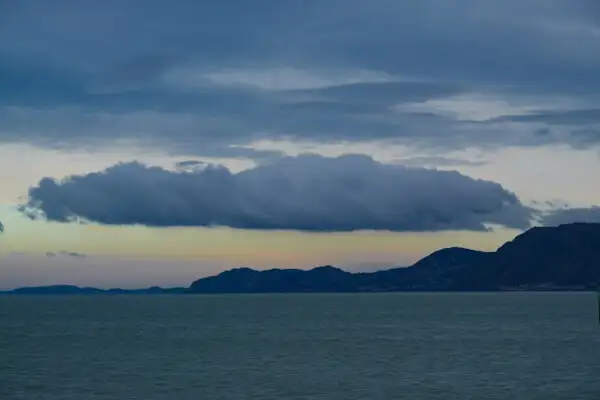
Intro and travel report
Many, many years ago I was in Wales on my motorbike, most of the time in the beautiful Snowdonia National Park, a mountainous nature reserve in the north of Wales. I really liked it back then, so much so that I left my motorbike for a few days to go hiking there.
Since then, we have travelled through Wales many times by car, always on the way from Germany to Ireland, or from Ireland to Germany, because we (come from Germany and) have our second home in Ireland. But we never had time for Wales – what a pity. Many travellers will feel the same way.
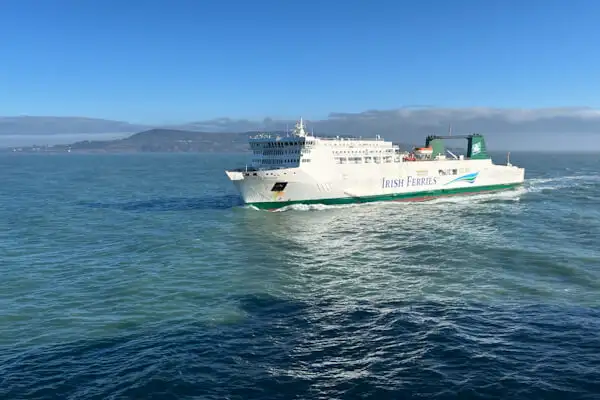
But this time everything was going to be different: It’s February when we cross over from Dublin to Holyhead at the northern tip of Wales and we’ve planned a few extra days to visit the north and west of Wales.
We set off from Dublin in fine weather. The ferry journey is super pleasant and flies by. When we arrive in Wales, we are greeted by clouds and increasingly fierce winds.
No surprise, we had booked an early ferry to cross before the approaching storm. Winter storms are not uncommon on the Irish and British Isles, but quite rare in the summer months.
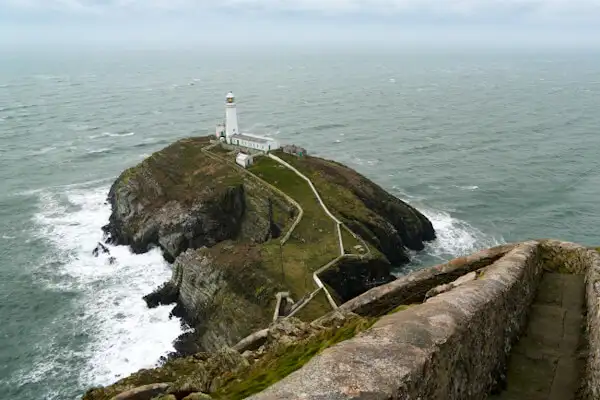
Our first photo stop is the South Stack Lighthouse, very close to Holyhead. Even the short drive there is cool, as it leads along small, winding roads over rocky hills up to the high cliffs. Just 10 minutes from Holyhead, you have the impression of being in a wild landscape far away from civilisation.
The lighthouse stands on a rock in front of the cliffs and is an absolute eye-catcher. Opposite it is the Elin’s Tower, an old watchtower that offers a great view of the cliffs and the lighthouse.
A little further on, you can descend the long, winding steps to the lighthouse. Although the lighthouse is now closed to visitors in February, I climb down the steps a little. The stormy wind roars and tugs at me and my camera – madness – but it’s fun!
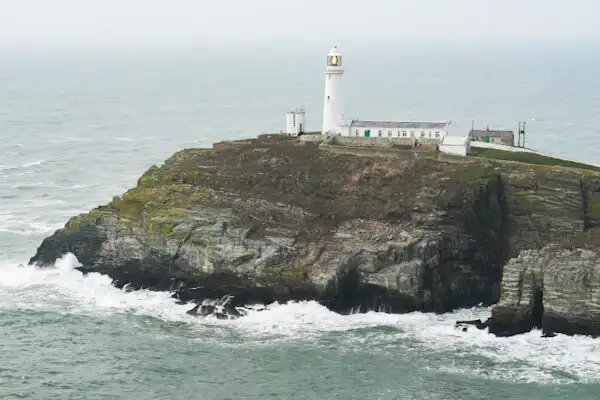
We drive across the island of Anglesey, which is the northern tip of Wales, an island. It is separated from the mainland by a strait, the Menai Strait. To the south-west and north-east it forms bays into the Irish Sea. In the centre it is more like a river, which can be easily crossed by bridge.
To the south lies a mountain world that could not be more beautiful, the Eryri National Park or Snowdonia. Even on the south bank of the Menai Road, you can see high mountains rising steeply.
We are on the north bank, travelling along the Menai Strait to the north-western bay. The journey along the shore is an experience in itself. The small road meanders along the water in many bends, revealing fantastic views of the water and the mountains beyond.

Then the landscape opens up and we arrive in the small town of Beaumaris. Colourful houses greet us at the entrance to the village and stretch through the small main street to the highlight of the small town: Beaumaris Castle.
This is one of the most important and most beautiful castles in Wales – and Wales has a lot of castles! It is a perfectly symmetrical moated castle built very close to the shore of the bay. My article on Beaumaris is linked below, in the last paragraph.
I just take a few photos and a quick walk around the outside, because the light fades early on this February afternoon and I also want to take photos of the pier, the shore and the town. a race against time! Not stressful at all, this holiday…
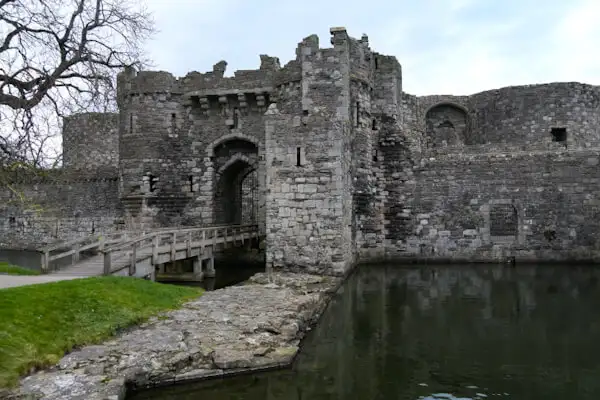
All in all, we really enjoyed Beaumaris on our short visit. We drive back along the shore, cross the Menai Strait by bridge and drive back up the north shore – always heading north, all the way to Llandudno. This drive along the northern shore of the bay is also super beautiful.
Llandudno is a fashionable seaside resort and the largest seaside resort in Wales. It is situated in a crescent-shaped bay with a sandy beach and boasts many beautiful Victorian-style houses, an absolutely fantastic seafront promenade and a fantastic pier that juts out into the sea.
The town centre of Llandudno is also beautiful, with lots of shops, restaurants and bars. The only downside is that the town is aware of its reputation and is correspondingly expensive, especially the accommodation, even now in February. I’ll link you to my article on Llandudno in the last paragraph below.
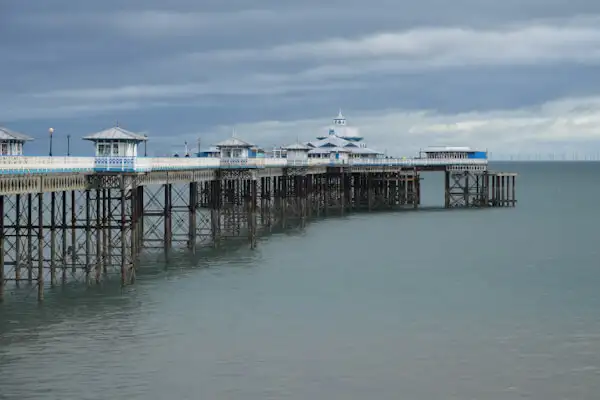
The journey continues to Betws-y-Coed. The small village lies in the centre of Snowdonia. The name is no coincidence, because although the temperatures are mild, some of the mountain peaks are still covered in snow caps. Betts-y-Coed is a really nice little village with rustic, low houses made of dark, rough stone. Absolutely lovely and well worth a visit! It is also the starting point for many hikes and other activities in the national park. I’ve been hiking here before, which I really enjoyed.
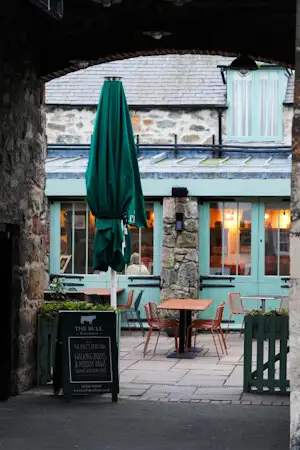
We don’t have that much time today and continue on narrow, winding pass roads over the mountains towards the west coast. The journey was incredibly beautiful and the mountains are a dream!
We are travelling by car this time and I have to warn you: with a motorhome (like ours), the narrow, sometimes single-lane pass roads are certainly no fun, so it’s better to plan for slightly larger roads through the valleys.

Unfortunately, I didn’t take any photos in the mountains because it was raining cats and dogs – pouring! And I didn’t want to do that to my camera. But still – the mountains are a dream!
We follow the coastal road further and further south and come to Aberystwyth. Apart from a few very small villages, this is practically the only town on the west coast. It is a seaside resort, a little smaller than Llandudno and also a little less glamorous. When we arrive, many of the colourful hotels and houses on the beach promenade are covered in scaffolding. They are probably being spruced up for the coming summer season.
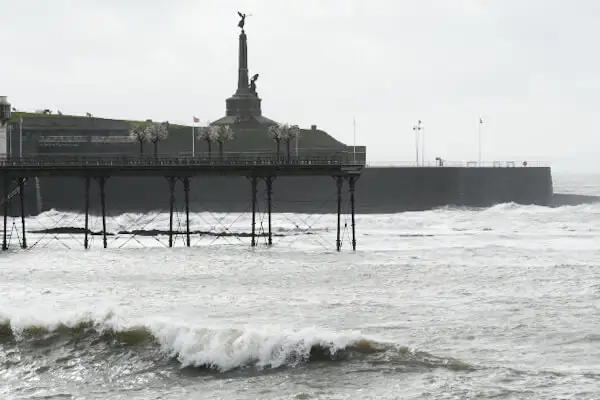
The beach consists of coarse-grained dark sand that has made it over the quay wall onto the promenade – it was a storm that was probably a bit more violent. That will also be cleared up by the summer, I’m sure.
Today’s storm brings me another strong wind and dark clouds – not great for taking photos, but it’s not cold, at least. I follow the promenade past the Per to the old Castell, or castle, which used to watch over the bay. Today it’s a ruin with a war memorial next to it – also cool!
Behind it is another beach, the south beach. The town centre is very nice with many historic houses. We really liked the town centre during our short visit.
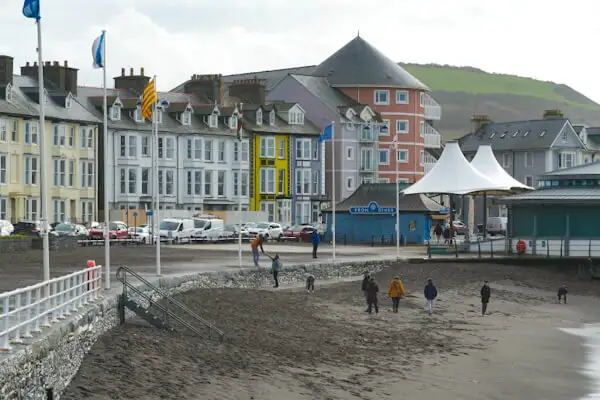
We follow the coast further south to the south-west of Wales. We pass the cosy fishing village of Newquay and find our accommodation for the night in the small village of Tresaith. We walk down the hill to the cove. A cove is a small, sheltered bay. There we find a nice pub-restaurant with a wonderful view of the small sandy beach and the surrounding cliffs – marvellous!
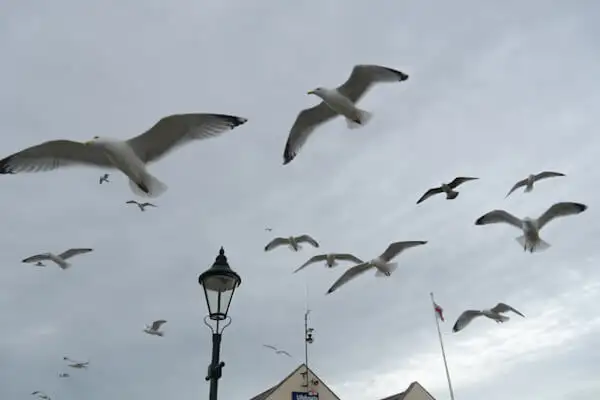
As is so often the case, the days of travelling on the islands fly by and the very next day we have to break off, cross Wales and continue our journey to the south of England in the direction of Germany.
We spend another night in the harbour district of Portsmouth before taking the ferry across the English Channel the next day. Although this is not part of Wales, I would like to mention it because we found Portsmouth and its harbour district very cool! It’s definitely worth exploring in more detail on another occasion…
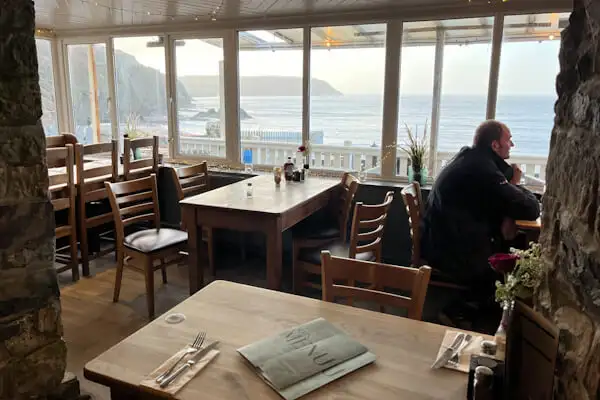
Most important places to visit in Wales
I go into more detail about the sights in and around Beaumaris, Llandudno and Aberystwyth in other articles, which I link to at the bottom of the last one. Here I’ll just briefly list a few highlights of Wales that you can include in your itinerary:
Some of the most important castles in Wales:
– Castle Coch
– Castle Beaumaris
-Castle Caernarfon
– Conwy Castle
– Powis Castle
– Caerffili Castle
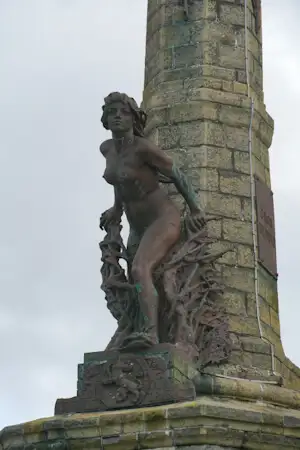
Some of the most beautiful lighthouses in Wales:
– Trwyn Du
– South Stack Lighthouse
– Strumble Head
– Bardsey
– LLanddwyn
– Nash Point
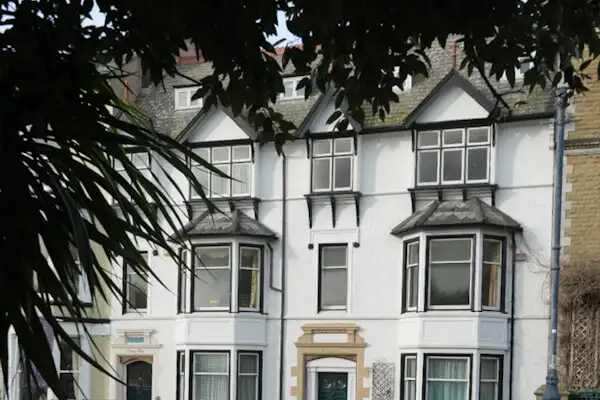
Some of the most beautiful coastal towns in Wales are:
– Llandudno
– Beaumaris
– New Quay
– Laughane
– Tenby
– Cardigan
– Abersoch
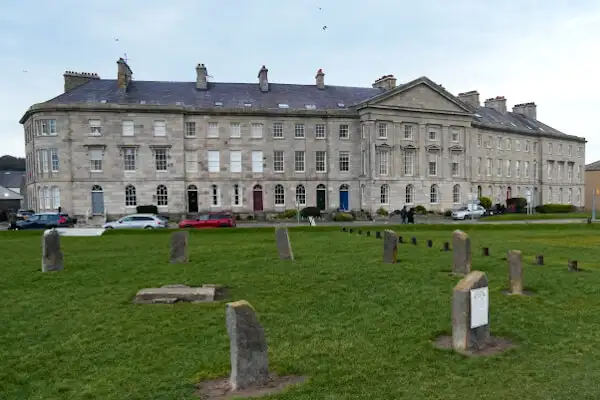
(Brief) history of Wales
Wales is located in the west of England and is part of Great Britain together with England and Scotland. The United Kingdom of Great Britain and Northern Ireland also includes the Republic of Northern Ireland – as the name suggests.
Together with Ireland, Northern Ireland, Scotland, the Isle of Man and Cornwall, Wales is part of the Celtic Nations on the British-Irish Isles. On the mainland, the French Bretgane also belongs to the Celtic Nations, the home of Asterix and Obelix the Gauls – who were also Celts.
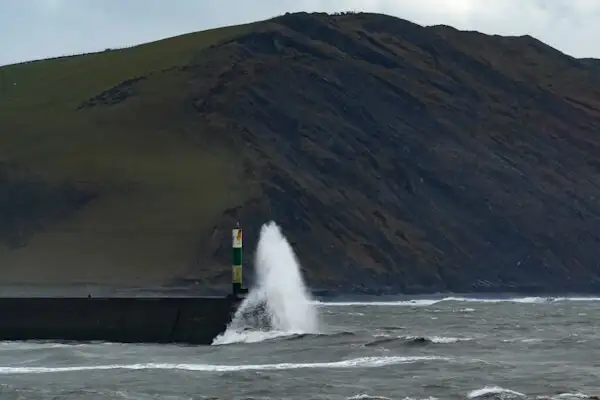
While the Gauls were defeated by the Romans much earlier, the Romans had a much harder time in England and Wales. The later Angles and Saxons also encountered fierce resistance from the island Celts.
It was not until the Anglo-Norman King Edward I conquered Cornwall and Wales and other parts of the country that England and Wales were essentially founded. The Irish islands were also conquered by the Normans, although Scotland was not conquered by the English until much later.
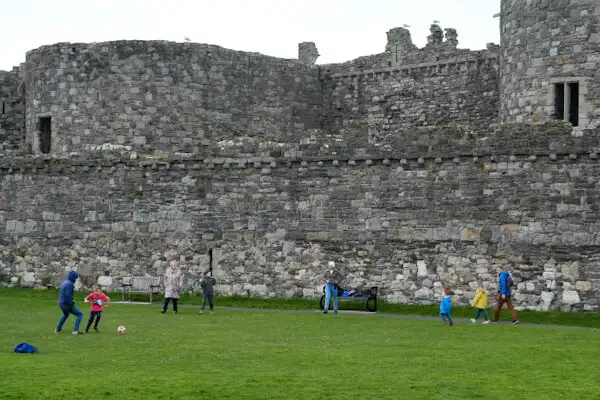
All these conquests had to be held against the rebellious Celtic clans and so Norman castles were built all over the coasts and important places in the country. There are many in Ireland and Northern Ireland and a huge number in Wales!
In Wales, Anglesey was the last bastion of the Britons or Britannians, as the island Celts were called by the Romans.

To this day, in many parts of Wales, and particularly on Anglesey, Cymric is spoken alongside English – or is being spoken again. This is a modern version of the ancient Celtic language, which is now being taught in schools again.
Industrialisation came to Wales in the 18th and 19th centuries. Above all, mining for coal, copper and tin, but also slate slabs, which were extracted in the mountains of Wales and exported to many European countries via the ever-growing sea harbours.
The railway network was expanded and the harbour towns on the south coast grew in size and importance.

Nevertheless, away from the busy south coast, Wales is still very rural and dominated by small towns and villages.
It is characterised by beautiful coastlines and mountains, especially in the north and north-west, and therefore also thrives on tourism, which remains refreshingly manageable even in summer, away from the well-known seaside resorts and Snowdonia National Park. The beautiful north-west of Wales is not overcrowded and that is a good thing.
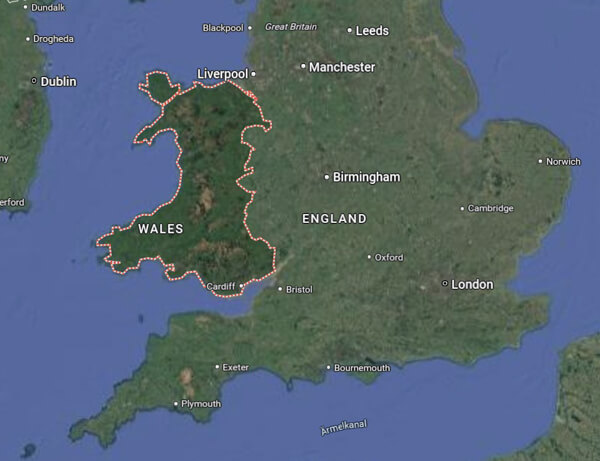
Practical travel tips to Wales
You can easily combine a trip to Ireland with a trip through Wales, as we did.
The best time to visit the British and Irish Isles in general is between May and September. But you can also have very nice weather here in April or October – and the same applies to Wales.
In the south-west of Wales there are two harbours, Fishguard and Pembroke, from where ferries run to Rosslare in the south-east of Ireland. In the north-west of Wales there are ferries from Holyhead to Dublin in eastern Ireland.
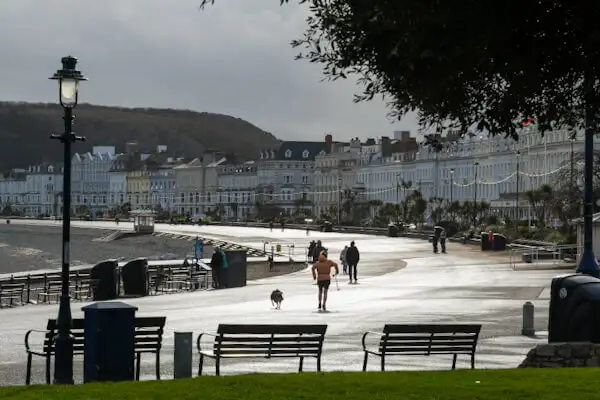
But you can also easily spend a wonderful week-long holiday in Wales, or combine it with a week-long holiday in Cornwall. Many things are possible and no matter what you do, Wales has super beautiful landscapes and places – so let’s go to Wales!
Conclusion
Wales is a scenic highlight in the west of England. The north and west of Wales are particularly beautiful.
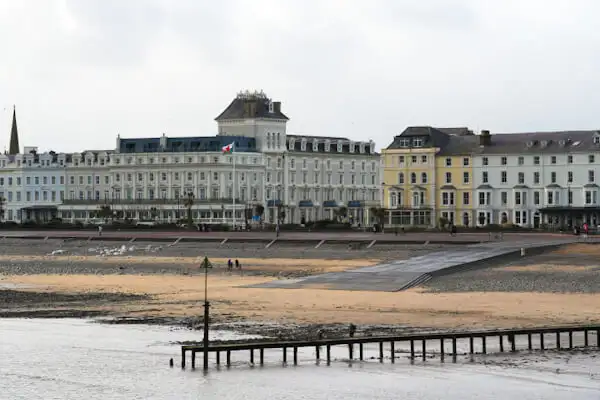
If you are travelling to Ireland via England, you can easily add a few days in Wales to your route. But Wales is also absolutely worth spending a week’s holiday here, as there are many beautiful areas and lots to see.
And then you can also combine a week in Wales with a week in Cornwall. I’ll link you to my articles on this below.
Whatever you decide, you can’t go wrong with Wales – have fun and enjoy your trip!
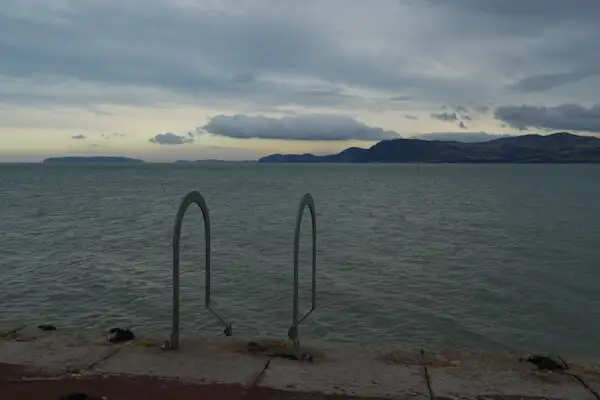
More interesting articles for you
Touring Cornwall
Llandudno: Marvelous seaside resort in the north of Wales
Aberystwyth: Lively west coast (of Wales)
Beaumaris: French charm on the island of Anglesey in Wales
Cover picture: At the South Stack Lighthouse (Photo: Ulrich Knüppel-Gertberg)